“Save the bees; they help to keep the world sweet.”
Who are Bees?
Bees are flying insects that collect nectar and pollen. They belong to the class Insecta, order Hymenoptera, and Superfamily Apoidea including the familiar honeybee (Apis) and bumblebee (Bombus and Psithyrus) as well as thousands more wasplike and fly-like bees. There are over 400 genera and about 25 000 species have been identified.
Body Structure and Patterns
A bee’s body is composed of three parts: an abdomen, a thorax with six legs, and a head with two antennae. Every bee has two pairs of wings and branching hairs on some part of their bodies. Stingers, which are modified ovipositors, or organs that were originally used to lay eggs, are only found in female bees. these insects might be brown, black, or striped in white, yellow, or orange. Adults range in size from about 2 mm to 4 cm (about 0.08–1.6 inches). Life span is up to five years for queen bees and a few weeks for males. They lay 2000 eggs per day, and they take 16 to 24 days to complete metamorphosis which depends upon sex.
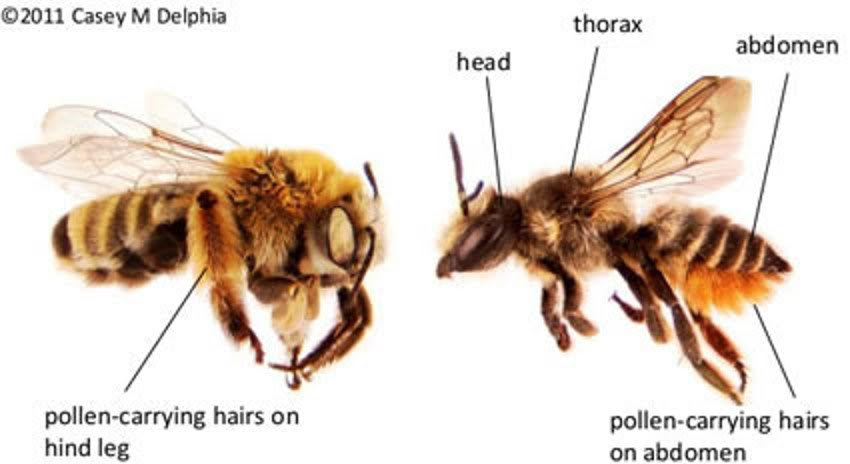
Diet and Behavior
They feed on nectar and protein-rich pollen from flowering plants, flying from flower to flower feeding on nectar and collecting pollen grains. Bees carry out the crucial task of pollination while they forage. Some pollen adheres to a bee’s body as it enters a flower to consume nectar and collect pollen. The bee then moves on, dropping part of that pollen on the following flower it visits. This causes fertilization, allowing the plant to grow and produce the fruits and seeds that are a source of food for so many other wildlife species. All female bees have the ability to sting, but they only do so when they feel threatened. Honeybees are typically more aggressive and likely to sting when disturbed than solitary native bees since they have hives full of honey and larvae that need to be protected.
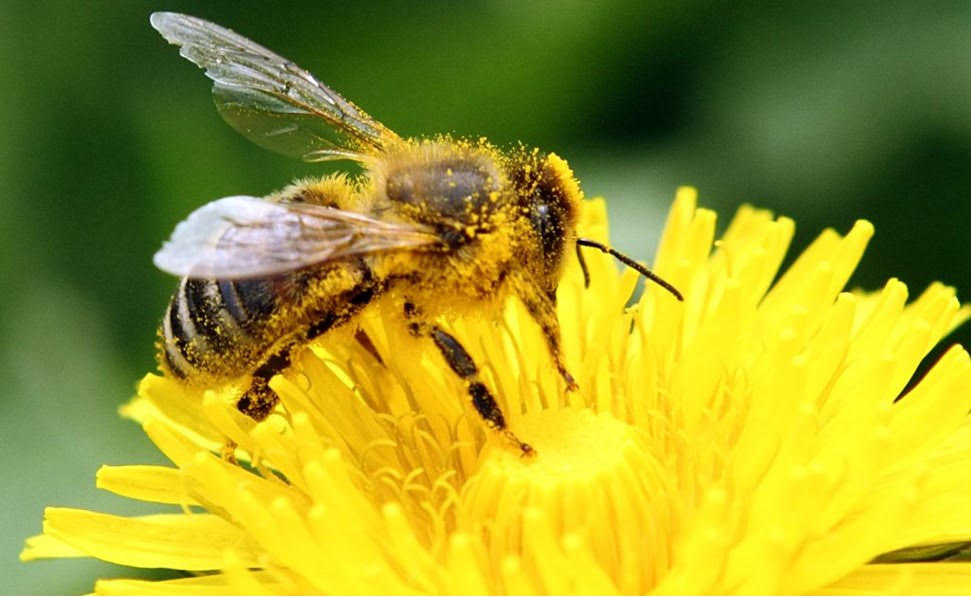
Habitat and Family Life
The majority of bees live alone and don’t build hives. Each female creates her nest in a hole that she finds in decaying walls, dead wood, tree hollows, or snail shells. Some use mud chewed up leaves, and animal hairs to construct their nests on rocks or shrubby plants. In the nest, eggs are placed on pollen balls. In other bees’ nests, parasitic bees lay their eggs. The pollen and honey meant for the host’s larvae are consumed by their larvae.
Rarely do solitary bees sting. In truth, female bees’ stingers are too short to pierce human skin, and males don’t even have stingers. Because they lack a colony to defend or a “backup” like honeybees, solitary bees are even less likely to sting. They combine pollen and nectar to create a snack known as “beebread” instead of generating honey. Females gather pollen in their pollen baskets and bring it back to the nest where they bake batches of beebread for their young. Bumblebees and honeybees are gregarious insects. They reside in colonies made up of a fertile queen, sterile female employees, and males known as “drones.” The only bees that can make and store honey are these social bees. Colonies or hives are the homes of honeybees, bumblebees, and a few native bee species.
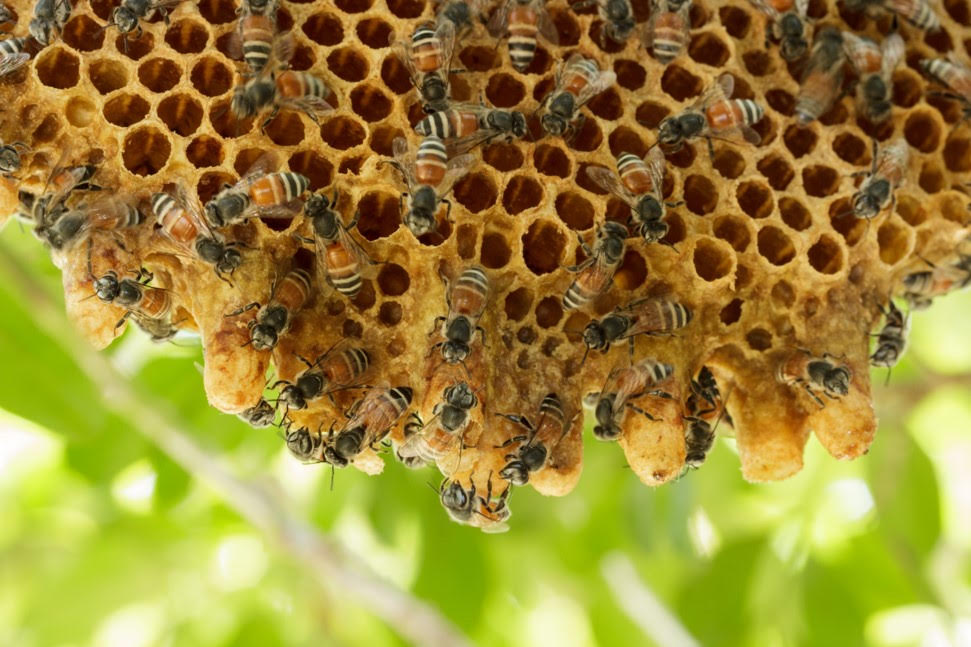
Bees work for us free of cost
They might even make you scared. But the more you learn about these creatures, the more you’ll come to respect these fascinating creatures and how much more than just honey they give us humans. Bees provide several important services that are crucial for ecosystems and human well-being. Some of the main services provided by them are,
- Pollination: Bees are important pollinators of flowering plants, including many types of crops. They carry pollen grains from flowers to bloom as they collect nectar and pollen, aiding fertilization and enabling the development of seeds and fruits. The reproduction of several plant species and the preservation of biodiversity depend on this mechanism.
- Crop production: By pollinating a variety of crops, such as fruits, vegetables, nuts, and oil seeds, bees serve a crucial part in agricultural systems. Their pollination assistance helps increase agricultural yields, produce quality, and crop diversity of the main servicing. Bee pollination is vital for many crops that are valuable for the economy.
- Honey production: Bees generate honey, a wholesome and enticing liquid made from floral nectar. To produce honey, beekeepers oversee honeybee colonies. A natural sweetener, food and beverage ingredient, and component in traditional medicine are just a few of the uses for honey.
- Production of beeswax: Bees excrete beeswax, a natural material, to construct their honeycombs. Numerous industries use it, including food preparation, pharmaceuticals, cosmetics, skincare, and candle making. In addition to being a sustainable substitute for synthetic waxes, beeswax is prized for its distinctive qualities.
- Biodiversity conservation: Bees help to preserve biodiversity and the ecological balance of the environment. Bees help plants reproduce by pollinating a variety of plant species, which results in the development of seeds and fruits. In turn, this promotes the habitats of wildlife, including the birds, insects, and other creatures who depend on these plants for food and refuge.
- Ecological services: Bees provide a variety of ecological services that are necessary for ecosystem health. They aid in plant reproduction, which helps keep ecosystems resilient and stable. In addition, by pollinating wildflowers and facilitating their regeneration, bees support the preservation of healthy forests, meadows, and other natural environments.
- Genetic diversity: Cross-pollination by bees contributes to the genetic diversity of plant populations. This procedure involves the exchange of genetic material between several plants, improving both the general health of the plant and its capacity to adapt to environmental changes.
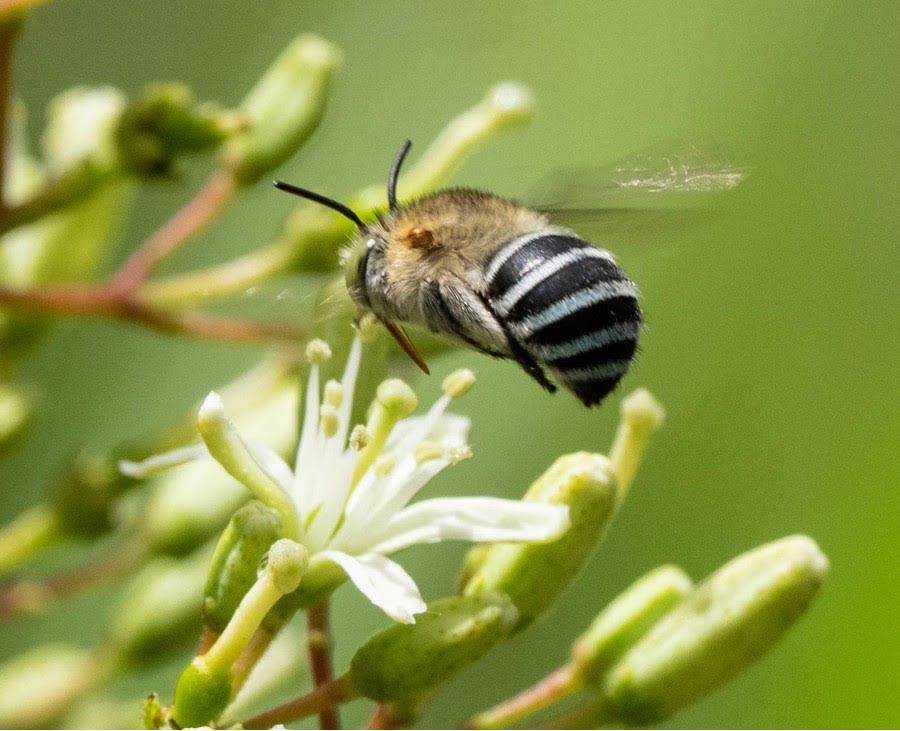
Conservation of Bees
It’s important to note that bees are currently facing numerous threats. Bee populations are impacted by intensive farming methods, land use changes, monocultures, pesticides, and greater temperatures brought on by climate change. Protecting and supporting bee populations is crucial for maintaining their essential services and ensuring the health of ecosystems and global food systems.
Due to human effects, species extinction rates now are 100–1,000 times greater than they should be. Around 35% of invertebrate pollinators, such as bees and butterflies, and 17% of vertebrate pollinators, such as bats, are in danger of going extinct worldwide. If this pattern holds, nutrient-dense crops like fruits, nuts, and many vegetable crops will be gradually replaced by staple crops like rice, corn, and potatoes, leading to an unbalanced diet over time.
We can safeguard them with simple approaches. Think about going without pesticides. In your garden, include a variety of native plants. Create areas for them to nest and lay eggs. Give native bees protected, undisturbed places where they can rest. No garden or yard? Installing a cheap “bee block” for single bees to nest in will solve the issue, so no worries.
Why a World Bee Day?
By recognizing World Bee Day every year, we can increase public awareness of the numerous issues these pollinators face today as well as the crucial role they play in maintaining human and environmental health.
The theme for World Bee Day 2023 is ‘Bees engaged in pollinator-friendly agricultural production’- An appeal to governments around the world to support pollinator-friendly agricultural practices and the significance of safeguarding bees and other pollinators, particularly through methods that are reinforced by evidence-based agricultural production practices.
“Don’t Bee a hater, save the pollinator.”
Written By:
Phothygajana Gajenthira,
2nd Year Undergraduate,
Biological Science Stream,
Faculty of Science,
University of Colombo.
References:
- Bees | National Wildlife Federation. (n.d.). Retrieved from https://www.nwf.org/Educational Resources/Wildlife-Guide/Invertebrates/Bees
- The Editors of Encyclopaedia Britannica. (2023, May 3). Bee | Definition, Types, & Facts. Retrieved from https://www.britannica.com/animal/bee
- United Nations. (n.d.). World Bee Day | United Nations. Retrieved from https://www.un.org/en/observances/bee-day
- World Bee Day. (n.d.). Retrieved from https://www.apimondia.org/world-bee-day.html#:~:text=World%20Bee%20Day%20%2D%2020%20May,people%20and%20the%20planet%20healthy.
Image Courtesy:
- Title Image: https://bit.ly/43eU2PI
- 1st Content Image: https://bit.ly/45esyLX
- 2nd Content Image: https://to.pbs.org/3Wn5TZT
- 3rd Content Image: https://bit.ly/43aOB4y
- 4th Content Image: https://bit.ly/3MILknu

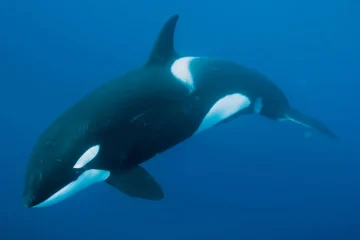
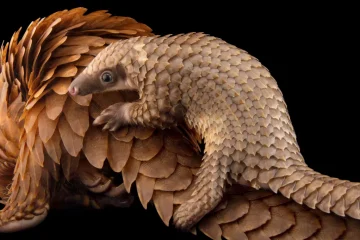
0 Comments